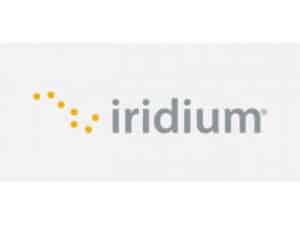
GL launches EmissionManager software at SMM
Written by Nick Blenkey SEPTEMBER 5, 2012 — Classification society Germanischer Lloyd (GL) has launched a new software product, “GL EmissionManager,” that will allow shipowners and operators to collect, track and calculate the emissions of a ship in detail.
SEPTEMBER 5, 2012 — Classification society Germanischer Lloyd (GL) has launched a new software product, “GL EmissionManager,” that will allow shipowners and operators to collect, track and calculate the emissions of a ship in detail.
“The GL Emission Manager works with data that is already being entered manually today. But because currently this is not being collected in one tool, making additional evaluations and conclusions based on the data is not possible,” said Dr Torsten Büssow, GL’s Head of Maritime Software, at the launch of the new product at GL’s stand at SMM in Hamburg.
Working in cooperation with shipping company Hamburg Süd, GL has developed the GL EmissionManager system to systematically capture all environmentally relevant ship operation data. Using this software tool, says GL, owners and operators no longer have to rely on assumptions and estimates, but instead have reliable data with which to assess the performance of vessels and fleets and to generate reports for mandatory regulations, voluntary databases and to satisfy a client base which is increasingly interested in verifying environmental performance.
The GL EmissionManager software is designed to systematize and structure reports that are traditionally recorded in less coordinated ways. Operational and voyage-related data, such as noon/position report, departure, arrival, and stoppage reports are recorded and analyzed and environmental information, examining factors such as fuel consumption, emissions to air (CO2, SOX, NOX), garbage, sludge, ballast water and chemicals, is extracted.
The system consists of two parts, a software component that collects information (“emission recorder”) and a “Green Server,” where the data is analysed and certified and where different reports are produced.
The “emission recorder” is installed on the computer of the participating vessel. This software collects environmentally relevant data in the form of voyage and operation reports. Each report has a standard form containing relevant fields: for example, the port departure report contains fields regarding cargo load, fuel, position and more, whereas in the garbage report the crew can enter information about the amount and type of garbage and kind of disposal. This has the additional benefit of making traditional ship-to-shore reporting easier for the crew as, with one click, the standard forms are transferred from the EM Recorder to the GL GreenServer, which tracks all reports. In addition, standard event e-mails are automatically sent from the vessel to the GL GreenServer in order to signify standard events such as port departure.
The GL Green Server logs, structures and stores the data for comprehensive fleet analysis, for providing data for regulatory or classification purposes (e.g. SEEMP, EEOI or Environmental Passport), or for environmental shipping databases such as the Clean Shipping Index or Clean Cargo Working Group. In addition, it allows the data inventory to be certified for consistency and reliability. The system also checks that no reports are missing. If the GL GreenServer, for example, receives an end of sea passage report, it automatically checks that all prior reports have been sent. If a report is missing, the vessel and the office are notified and further enquiries can be made.
“As you can only manage what you measure, the GL EmissionManager’s comprehensive reporting capability allows owners and operators to set targets and measure target achievement – two basic requirements for the SEEMP, for example,” said Dr. Büssow. “The system offers shipowners the opportunity to set up comprehensive emission reporting for the entire fleet using the data you already have, benefit from comprehensive fleet analysis capabilities across all operational and voyage data and improve data quality and integrity to the highest certifiable standards.”





Leave a Reply
You must be logged in to post a comment.